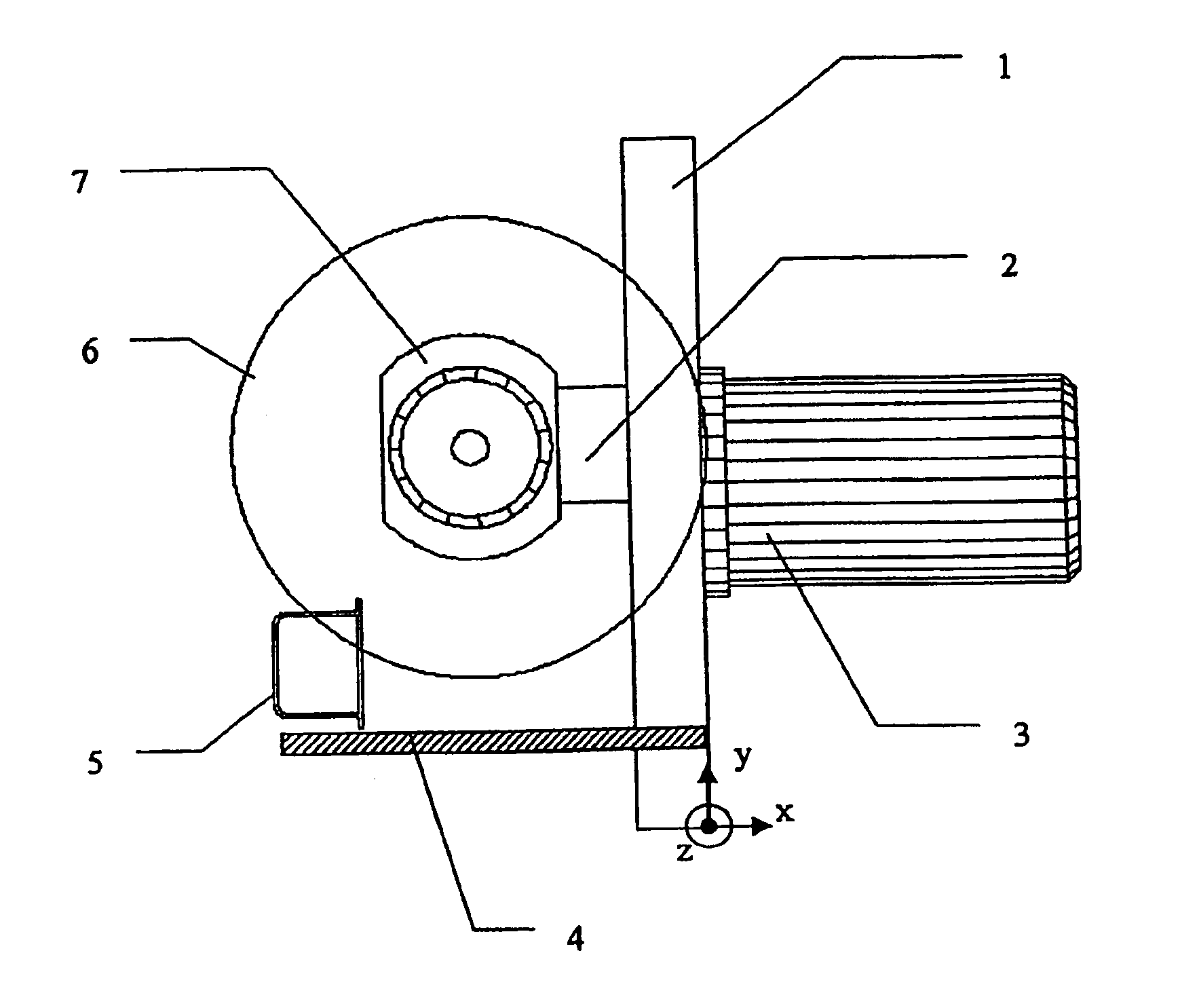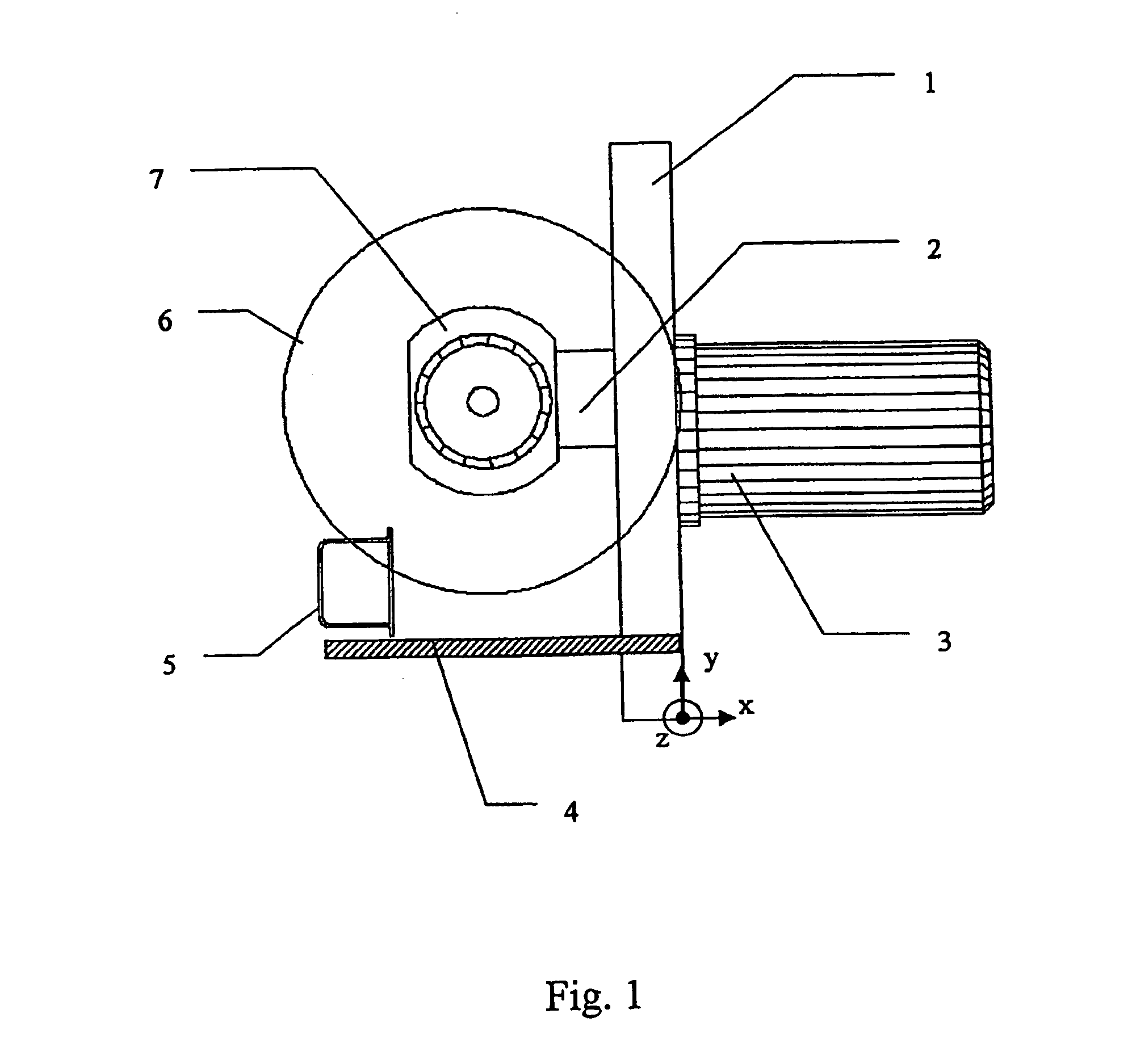Method for cutting extruded profile sections into lengths
a technology of extruded profile and length, which is applied in the field of cutting an extruded profile section into lengths, can solve the problems of inability to rule, prolong the total production time, and inaccuracy of contours
- Summary
- Abstract
- Description
- Claims
- Application Information
AI Technical Summary
Benefits of technology
Problems solved by technology
Method used
Image
Examples
Embodiment Construction
FIG. 1 is intended to illustrate the inventive method. The diagram is drawn in a Cartesian coordinate system, whose XY plane is parallel to the plane of the paper, and whose Z-axis is perpendicular to the XY plane. There is shown a robot arm 3, which at its end guides a parting tool configured as a saw and positioned close to an extruded profile section 5. Extruded profile section 5 is illustrated in cross section. Thus, in the press flow, it is being moved in the Z direction. In the present case, the hollow extruded profile section is made of an aluminum alloy. Alternatively, it could just as well be made of a magnesium alloy.
Mechanical parting of extrusion profile 5 takes place by saw blade 6, which is disposed in the XY plane and is powered in rotary motion via main drive 7. For parting of extrusion profile section 5, saw blade 6 is guided in Y direction through extruded profile section 5, while the saw is being moved along a feed axis 1 in the direction of the Y-axis. During cut...
PUM
| Property | Measurement | Unit |
|---|---|---|
| temperature | aaaaa | aaaaa |
| temperature | aaaaa | aaaaa |
| speed | aaaaa | aaaaa |
Abstract
Description
Claims
Application Information
 Login to View More
Login to View More - R&D
- Intellectual Property
- Life Sciences
- Materials
- Tech Scout
- Unparalleled Data Quality
- Higher Quality Content
- 60% Fewer Hallucinations
Browse by: Latest US Patents, China's latest patents, Technical Efficacy Thesaurus, Application Domain, Technology Topic, Popular Technical Reports.
© 2025 PatSnap. All rights reserved.Legal|Privacy policy|Modern Slavery Act Transparency Statement|Sitemap|About US| Contact US: help@patsnap.com


